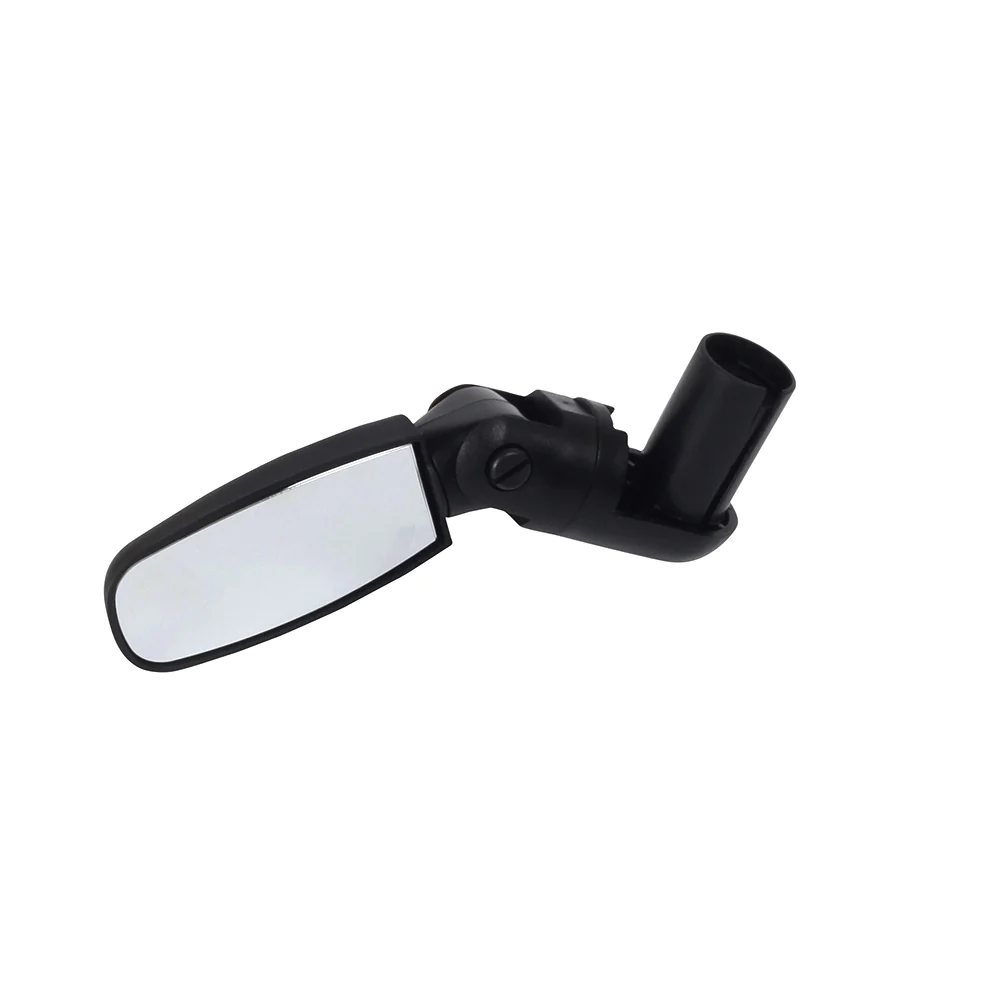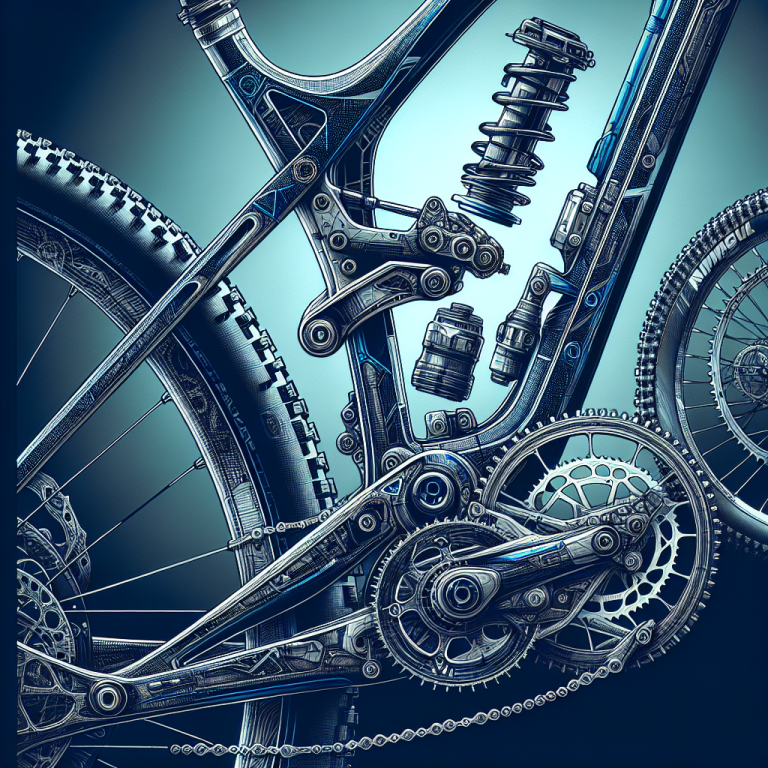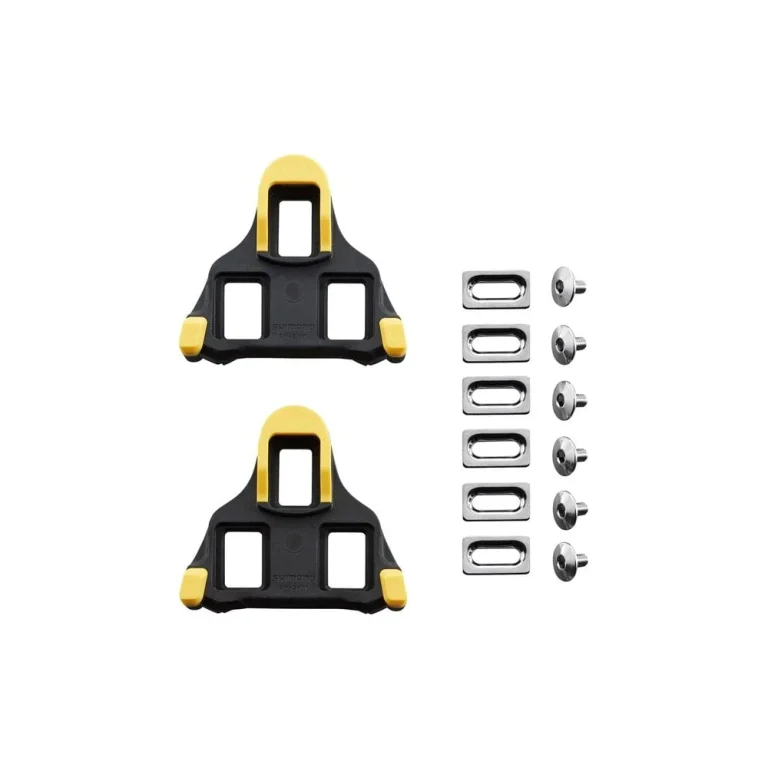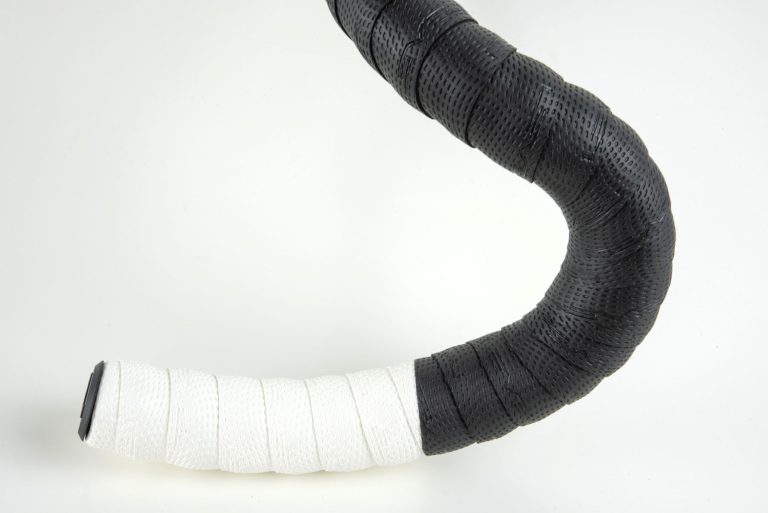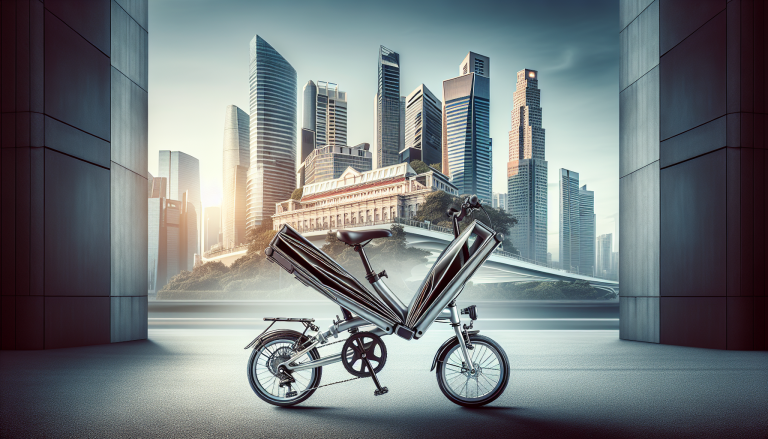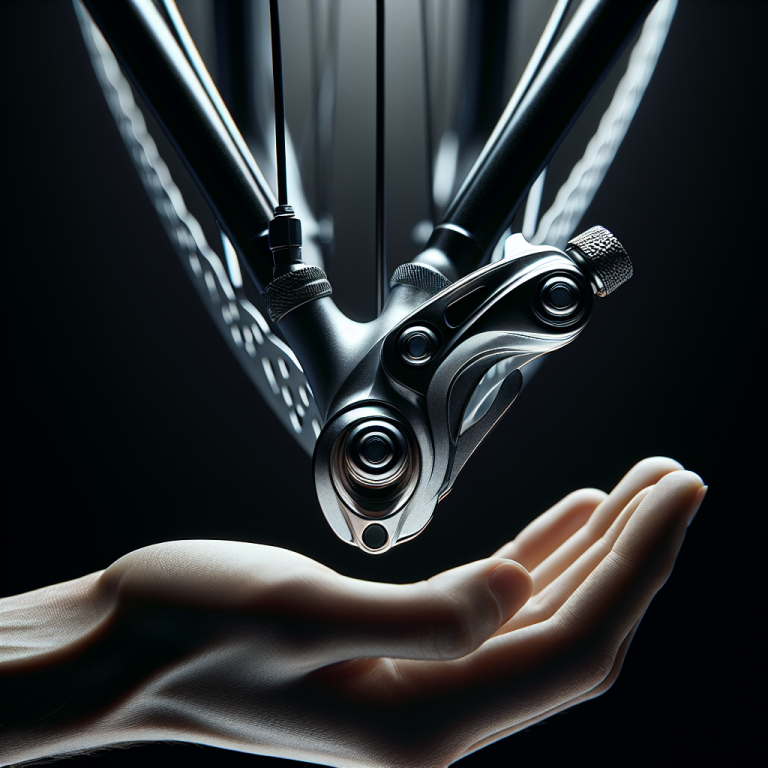Are you an avid cyclist looking to enhance your biking experience? Look no further! This article serves as your comprehensive guide to mirrors on your bike. Whether you’re a beginner or a seasoned rider, having mirrors on your bike can significantly improve your safety and awareness on the road. From choosing the right mirror style to adjusting it for optimal visibility, we’ve got you covered. So, hop on and let’s explore the world of bike mirrors together!
Table of Contents
Toggle1. Types of Bike Mirrors
1.1 Handlebar Mirrors
Handlebar mirrors are one of the most common types of bike mirrors. These mirrors are mounted on the handlebars of your bike and provide a clear view of the road behind you. They are usually adjustable, allowing you to position them according to your preference.
1.2 Helmet Mirrors
Helmet mirrors are attached to your helmet and offer a convenient way to see the traffic behind you without having to turn your head. These mirrors are lightweight and adjustable, making them popular among cyclists who value convenience and ease of use.
1.3 Eyeglass Mirrors
Eyeglass mirrors are designed to be attached to the arm of your eyeglasses or sunglasses. They provide a hands-free option for checking your blind spots while riding. These mirrors are small and unobtrusive, making them a popular choice for cyclists who prefer a minimalist setup.
1.4 Mirrors Mounted on Frame
Mirrors mounted on the frame of your bike offer a stable and fixed view of the road behind you. These mirrors are usually positioned near the handlebars and provide a wide field of view. They are a popular choice among touring cyclists and those who prefer a more permanent mirror setup.
1.5 Mirrors Mounted on Drop Bars
Mirrors mounted on drop bars are specifically designed for road bikes with drop handlebars. These mirrors are positioned at the end of the drop bars, allowing cyclists to see behind them without compromising their aerodynamic position. They are a great choice for road cyclists who prioritize speed and performance.
2. Benefits of Using Bike Mirrors
2.1 Increased Safety
One of the main benefits of using bike mirrors is the increased safety they provide. With a mirror, you can easily see vehicles approaching from behind, allowing you to make informed decisions when changing lanes or making turns. This enhanced awareness of your surroundings can help prevent accidents and keep you safe on the road.
2.2 Improved Visibility
Bike mirrors help improve your visibility as a cyclist. By having a clear view of the traffic behind you, you can react quickly to any potential hazards or unpredictable situations. This increased visibility is especially important in busy city streets or when cycling in traffic-heavy areas.
2.3 Enhanced Situational Awareness
Using bike mirrors enhances your situational awareness while riding. You can monitor the movements of vehicles behind you and make informed decisions based on this information. This heightened awareness allows you to anticipate potential risks and adjust your riding accordingly, ensuring a safer and more enjoyable cycling experience.
3. How to Choose the Right Bike Mirror
3.1 Consider Your Riding Style
When choosing a bike mirror, it is important to consider your riding style. If you primarily ride on busy streets or in heavy traffic, a mirror that provides a wide field of view and quick adjustability may be more suitable. On the other hand, if you ride long distances or prefer a minimalist setup, a smaller and lightweight mirror may be a better option.
3.2 Mirror Placement and Adjustability
Mirror placement and adjustability are crucial factors to consider when choosing a bike mirror. You want a mirror that can be easily positioned to provide a clear view of the road behind you. Additionally, it should be adjustable enough to accommodate riders of varying heights and riding positions.
3.3 Mirror Size and Field of View
The size of the mirror and its field of view are also important considerations. A larger mirror may provide a wider view of the road behind, but it could also obstruct your peripheral vision. Finding the right balance between size and field of view is essential to ensure both safety and comfort while riding.
4. Installing Bike Mirrors
4.1 Handlebar Mirror Installation
To install a handlebar mirror, start by selecting the appropriate side of the handlebar for mounting. Clean the handlebar surface and the mirror mount to ensure a secure attachment. Position the mirror in a comfortable and convenient location, then tighten the mirror clamp to secure it in place. Adjust the mirror to your desired angle and make sure it provides a clear view behind you.
4.2 Helmet Mirror Installation
Installing a helmet mirror requires attaching the mirror to your helmet. Clean the area on your helmet where the mirror will be mounted, ensuring a strong adhesive bond. Remove the backing from the adhesive pad on the mirror and carefully press it onto the helmet surface. Adjust the mirror to your preferred angle and make sure it provides an unobstructed view.
4.3 Frame or Drop Bar Mirror Installation
To install a frame or drop bar mirror, first determine the ideal position for mounting. Clear any debris or dirt from the mounting area on the frame or drop bar. Attach the mirror using the provided mounting hardware, ensuring a secure fit. Adjust the mirror to your desired angle and tighten any bolts or screws to keep it firmly in place.
5. Maintaining Bike Mirrors
5.1 Regular Cleaning
Regularly cleaning your bike mirrors is essential to ensure clear visibility while riding. Use a mild detergent or bike-specific cleaner to remove dirt, dust, and smudges from the mirror surface. Avoid using abrasive materials or harsh chemicals that could damage the mirror. Wipe the mirror clean using a soft cloth or microfiber towel, and make sure it is completely dry before riding.
5.2 Proper Adjustment and Alignment
Periodically check the alignment and adjustment of your bike mirrors. Vibrations and jolts from riding can gradually shift the position of the mirror, affecting its effectiveness. Make any necessary adjustments to ensure the mirror provides a clear and unobstructed view of the road behind you.
5.3 Replacing or Repairing Damaged Mirrors
If your bike mirror becomes damaged or develops cracks, it is important to replace or repair it promptly. Damaged mirrors can compromise your visibility and safety while riding. Check with the manufacturer or a reputable bike shop for replacement parts or repair services. Proper maintenance and timely replacement of damaged mirrors will help ensure your safety on the road.
6. Tips for Using Bike Mirrors
6.1 Scan Frequently
When using bike mirrors, it is important to scan frequently. Instead of solely relying on the mirror, make a habit of turning your head to check your blind spots directly. A combination of mirror checks and head turns will provide a more comprehensive view of your surroundings and help you stay aware of any potential hazards.
6.2 Practice Mirror Checks
To get the most out of your bike mirrors, practice regularly checking them while riding. This will help you develop the habit of quickly glancing at the mirror without losing focus on the road ahead. With practice, mirror checks will become second nature, allowing you to maintain situational awareness effortlessly.
6.3 Avoid Distracted Mirror Use
While bike mirrors can improve your safety and visibility, it is important to use them responsibly and avoid becoming distracted. Glancing at the mirror should be a brief action that does not detract from your attention to the road. Avoid fixating on the mirror for extended periods, as this can compromise your ability to react to changing traffic conditions.
7. Common Mistakes to Avoid
7.1 Relying Solely on Mirrors
One common mistake is relying solely on bike mirrors and neglecting other safety measures. Mirrors provide a valuable tool for checking your blind spots, but they should not be your only means of situational awareness. Remember to use your mirrors in conjunction with head turns and regular scanning to get a complete picture of your surroundings.
7.2 Using Cheap or Poor-quality Mirrors
Investing in high-quality bike mirrors is crucial for effective and reliable performance. Cheap or poor-quality mirrors may provide a distorted or limited view, making them less reliable while riding. It is worth spending a bit more to ensure your mirrors are of good quality and provide clear visibility.
7.3 Ignoring Adjustments and Maintenance
Another mistake is neglecting the adjustment and maintenance of bike mirrors. Over time, mirrors can become misaligned or loose, reducing their effectiveness. Regularly check the position and tightness of your mirrors, and make any necessary adjustments. Additionally, keep your mirrors clean and in good condition to ensure optimal performance.
8. Legal Requirements for Bike Mirrors
8.1 Check Local Laws and Regulations
The legal requirements for bike mirrors can vary by jurisdiction. It is important to familiarize yourself with the local laws and regulations regarding bike mirrors in your area. Consult the relevant government websites or contact local law enforcement agencies for accurate and up-to-date information.
8.2 Minimum Mirror Standards
In some areas, there may be minimum standards that bike mirrors must meet to comply with the law. These standards can include requirements for mirror size, field of view, and visibility. When purchasing bike mirrors, ensure they meet the minimum standards set by your local authorities to avoid any legal issues.
9. Reviews of Popular Bike Mirrors
9.1 Bike Mirror A – Pros and Cons
Bike Mirror A is a handlebar mirror that offers a wide field of view and quick adjustability. Users have praised its sturdy construction and clear mirror surface. However, some have found the mirror clamp to be slightly bulky and prone to loosening over time.
9.2 Bike Mirror B – Pros and Cons
Bike Mirror B is a helmet mirror known for its lightweight design and ease of installation. Cyclists appreciate its unobtrusive profile and the ability to customize the mirror angle. However, a few users have reported difficulties in securely attaching the mirror to certain types of helmets.
9.3 Bike Mirror C – Pros and Cons
Bike Mirror C is a frame-mounted mirror that offers a stable and fixed view of the road behind you. Its large mirror size provides excellent visibility, and the adjustable arm allows for easy positioning. Some users have mentioned that the mirror may vibrate slightly during rides on rough terrain.
10. Conclusion
10.1 Importance of Bike Mirrors
Bike mirrors play a crucial role in enhancing safety, improving visibility, and increasing situational awareness for cyclists. By providing a clear view of the road behind, they allow cyclists to make informed decisions and react quickly to potential hazards.
10.2 Final Thoughts
Choosing the right bike mirror, installing it correctly, and maintaining it properly are key to maximizing its benefits. By following the tips outlined in this guide and avoiding common mistakes, you can ensure safer rides and enjoy the peace of mind that comes with having a reliable and effective bike mirror. Remember to check the legal requirements in your area and consider reviews and recommendations when selecting a bike mirror that suits your needs. Happy cycling and stay safe!

